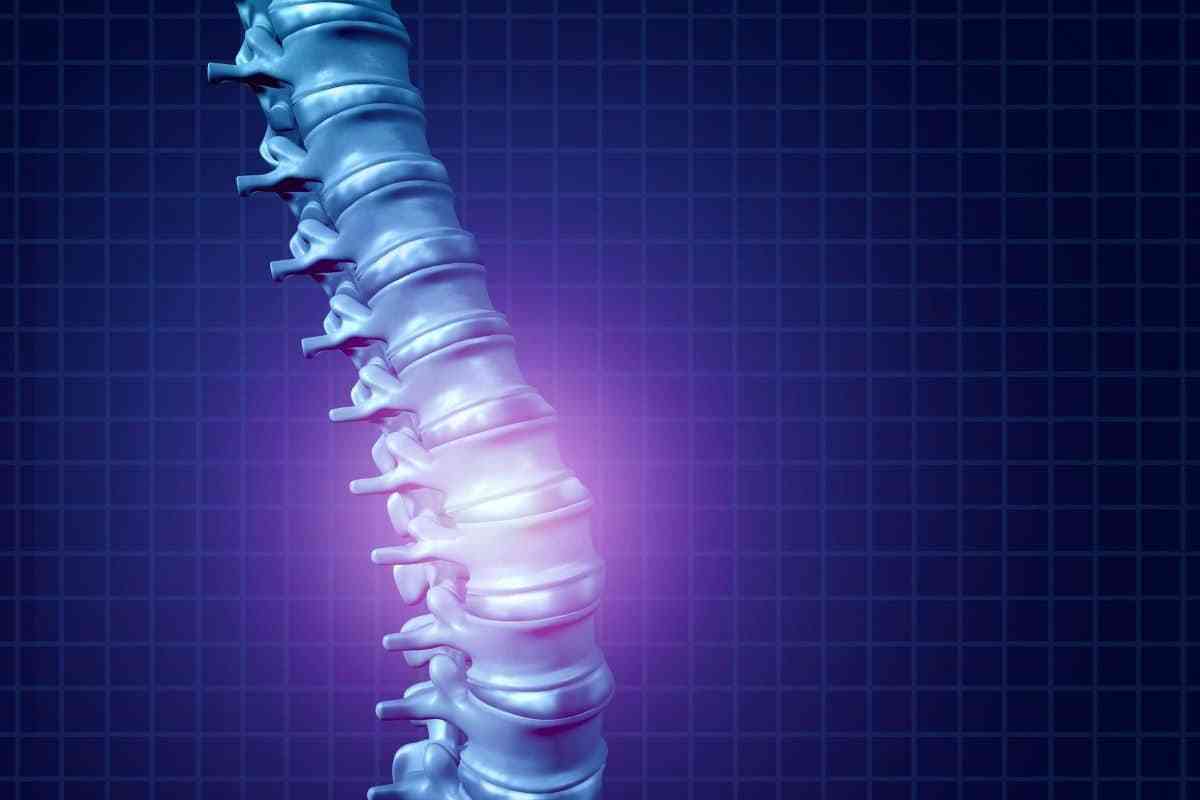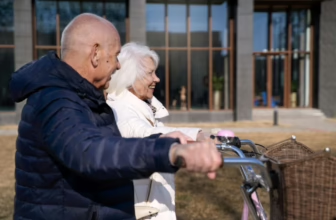Physical restrictions and mental hardships brought on by spinal cord injuries can significantly reduce a person's quality of life. With as many as 17,810 new cases of SCIs every year, many are still searching for symptom relief.
Medical interventions are necessary for the treatment of spinal cord injuries, but these natural remedies can aid in reducing some of the physical and mental effects of living with paralysis.
1. Aromatherapy
People with spinal cord injuries can benefit from aromatherapy, the therapeutic application of essential oils. Potential advantages have been noted for the following essential oils:
- Jasmine: The relaxing characteristics of jasmine essential oil help to lower anxiety and encourage relaxation. Additionally, it might aid in managing pain and reducing muscle tension, which would improve general well-being.
- Chamomile: Chamomile essential oil demonstrates anti-inflammatory qualities, which can help to lessen inflammation and suffering related to spinal cord injury. It also facilitates recovery by encouraging sound sleep.
- Lavender: Lavender essential oil is well known for its sedative and calming properties. It can facilitate better sleep, reduce stress, and help with pain and inflammation relief, all of which can aid in the healing process.
- Rosemary: The stimulating characteristics of rosemary essential oil help to improve blood flow and ease aching muscles. Additionally, it might aid in cognitive improvement, which is advantageous when recovering.
- Peppermint: Due to the analgesic effects of peppermint essential oil, it can temporarily relieve pain, a regular occurrence after a spinal cord injury. It also encourages mental clarity and reduces muscle spasms.
2. Acupuncture
Acupuncture, which is rooted in ancient Chinese medicine, involves inserting tiny needles into particular body locations to increase energy flow and reestablish equilibrium. For those with spinal cord injuries, it might offer the advantages listed below:
- Pain relief: Acupuncture causes the body's endorphins, which serve as the body's natural painkillers, to be released, which helps to lessen pain brought on by spinal cord injury.
- Better motor function: Acupuncture has been linked to improved motor function in spinal cord injury patients, which may help with the recovery of physical abilities.
- Decreased inflammation: Due to its anti-inflammatory qualities, acupuncture has been shown to help the body heal from injuries by reducing inflammation near the injury site.
3. Massage Therapy
Massage therapy is an excellent complementary treatment for people with paralysis, offering:
- Pain relief: Massage relieves tense muscles by boosting endorphin production and lowering pain. As a result, comfort is increased, as is pain control.
- Better circulation: By enhancing blood flow, massage treatment improves the delivery of nutrients and oxygen to the injured areas, aiding in tissue repair and encouraging healing.
- Promoting relaxation and lowering stress: Massage treatment helps people unwind, lowers their stress levels, and supports better mental and emotional health throughout the healing process.
4. Exercise
Physical recovery and overall well-being are aided by exercise, which is a crucial component of spinal cord injury rehabilitation. When deciding which exercises to recommend based on each person's ability, it is crucial to speak with healthcare professionals. For those with spinal cord injuries, the following exercises may be helpful:
- Yoga: Yoga incorporates a range of mild stretching exercises and motions that increase strength, flexibility, and balance. Additionally, it could improve relaxation, lessen the twitching of the muscles, and support mental health.
- Aerobics: Engaging in adapted aerobic activities, such as wheelchair workouts or cardio exercises, can enhance cardiovascular fitness and general endurance. The healing process is assisted by regular aerobic exercise, which also boosts physical well-being.
- Circuit Training: Circuit training incorporates resistance exercises, cardiovascular exercises, and flexibility training. People with spinal cord injuries can restore functional abilities with the use of this all-encompassing technique, which helps build strength, enhance mobility, and boost muscle tone.
5. Supplements
By supplying necessary nutrients, supplements help with the healing of spinal cord injuries. The following supplements have demonstrated possible advantages; however, it's still vital to speak with healthcare professionals for specific advice:
- Vitamin B9: Also referred to as folate, vitamin B9 is crucial for the regeneration and repair of nerve tissue. The healing process can be helped by including foods high in vitamin B9, such as spinach, broccoli, and asparagus, in the diet.
- Vitamin E: The antioxidant qualities of vitamin E aid in lessening inflammation and oxidative stress. Additionally, it might enhance blood circulation and encourage nerve cell regeneration, both of which might aid in the healing process.
- Vitamin D: The health of the bones and immune system depends on adequate vitamin D levels. Along with supporting general well-being throughout the healing process, it may also have neuroprotective properties.
- Vitamin C: Vitamin C is crucial for collagen synthesis, which is necessary for connective tissue repair. It can help the body repair itself thanks to its antioxidant characteristics and immune system boosters.
- Natural Treatments: Nerve Control 911 is an organic supplement designed to improve the health of your nervous system.
6. Physical Therapy
Recovery from spinal cord damage requires long-term physical therapy. It entails specialized movements and methods intended to increase functioning, strength, and mobility. Spinal cord injury patients benefit from physical therapy in the following ways:
- Rehabilitation: Using specialized exercise regimens, assistive technologies, and adaptive tactics, physical therapy helps patients reclaim their motor function, independence, and mobility.
- Pain management: Physical therapists use a variety of strategies, including manual therapy and modalities, to relieve pain, stop muscle spasms, and enhance general comfort.
- Adaptation and education: To encourage independence and enhance the quality of life, physical therapists offer advice on adapting methods, tools, and lifestyle changes.
7. Medicine
The management of particular symptoms and side effects linked to spinal cord injury often requires prescribed medications. Natural remedies are not a substitute for following your doctor's advice. It's typical to take the following medicines on a temporary or long-term basis:
- Corticosteroids: Methylprednisolone and other corticosteroids, such as those given soon after a spinal cord injury, can help to lessen swelling and protect nerve cells.
- Antibiotics: Infections, which can occur because of a weakened immune system and the elevated risk of urinary tract infections brought on by spinal cord injury, are treated with antibiotics if they are discovered.
- Nonsteroidal anti-inflammatory drugs (NSAIDs): Ibuprofen is one NSAID that is used to treat inflammation and control pain at the site of an injury.
- Muscular relaxants and antispasmodics: These drugs relieve pain and discomfort by managing muscular spasms and uncontrollable muscle contractions.
Final Thoughts
Alongside medical interventions, the care of spinal cord injuries can benefit from incorporating natural treatments including vitamins, acupuncture, massage therapy, and aromatherapy. Other natural treatments to consider include exercise and supplements. Furthermore, for symptom management and recovery, physical therapy and the right medications can be quite important.
To create a thorough treatment plan that considers each patient's needs, close collaboration with healthcare specialists is essential. A person with a spinal cord injury may benefit from greater health, more functionality, and a higher quality of life while undergoing treatment by combining these natural therapies, physical therapy, and medicine.
Follow me down the rabbit hole!
I'm Alice and I live with a dizzying assortment of invisible disabilities, including ADHD and fibromyalgia. I write to raise awareness and end the stigma surrounding mental and chronic illnesses of all kinds.
Dr. Wilson graduated from Rosalind Franklin University of Medicine and Science and completed her residency in Internal Medicine at Advocate Good Shepherd Hospital in Barrington, IL. Dr. Wilson specializes in providing culturally competent and trauma-informed care to patients with physical disabilities. In addition to her private practice, she works as a science communicator, teaching health literacy to middle school and high school students in her local school district.









